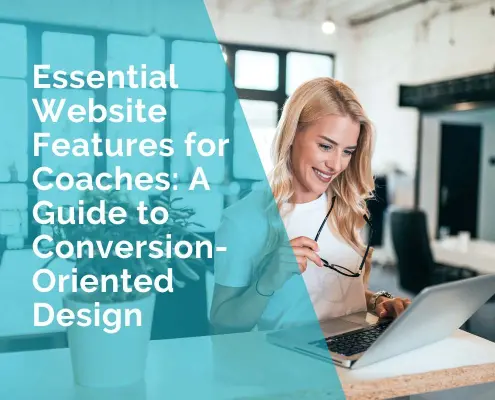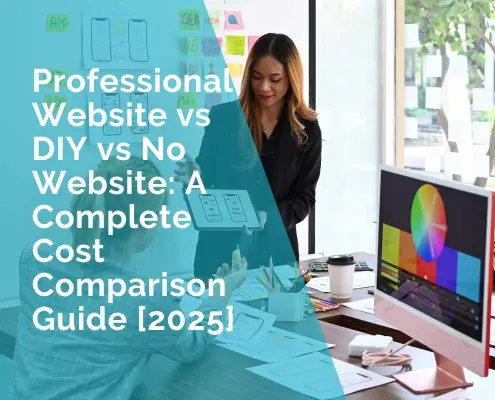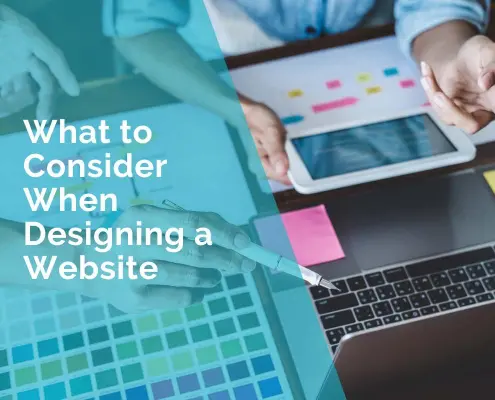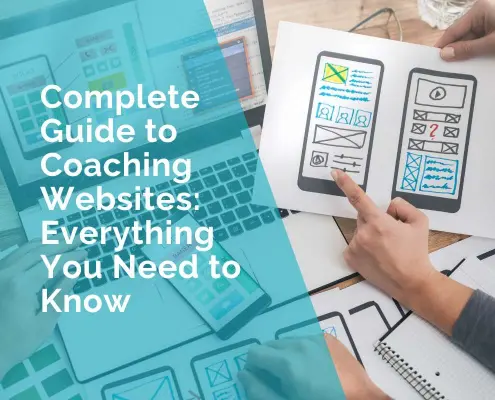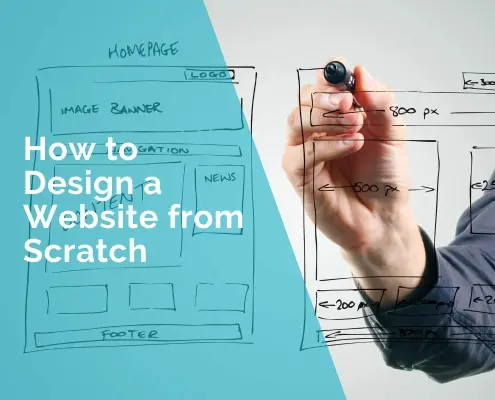Top Do’s And Don’ts Of Website Redesign
Digital marketing is said to be integral to the success of many businesses in today’s Internet-driven marketplace. One important facet in your digital marketing efforts is your website. But even after you’ve launched your site, the idea of doing a whole website redesign is still advisable. The web redesign process involves altering your site’s functionality, integrating new brand identity elements, and adjusting the site’s interface to introduce changes to strengthen your marketing strategy.
The most common reasons why you should consider website redesign include poor conversion rates, outdated web design style, obsolete technology, or mobile incompatibility. But through redesigning your website, you’ll be able to rejuvenate your online presence and boost your revenue. With that said, there are a couple of useful do’s and don’ts you need to observe if you’re considering a website redesign soon.
Do Define Your Objectives
One of the first things you need to do before redesigning your website is to figure out what you hope to achieve with the revamped online page. Having this in mind is vital to help you know whether redesigning your site is necessary, identifying the needed content gathering tools, and centralizing your efforts. Some of the reasons that might make you redesign your site include;
- Increase your conversion rate;
- Boost your number of leads;
- Increase meaningful website traffic;
- Your business has expanded;
- Decrease bounce rate;
- You’ve launched new products or services; and
- You’ve entered into new markets.
Any one of the abovementioned is a valid enough reason why you should proceed and redesign your website. This will consequently help you stay one foot ahead of your competitors and boost the growth of your business online.
Don’t Hard Reset Your Current Design
A common mistake many companies make during the website redesign process is hard resetting their website. You shouldn’t make such a blunder as there are still a lot of useful aspects your current website has.
Rather than doing a hard reset, your focus needs to gather insights from your existing sites, like how your customers interact and behave with the site design, and subsequently translate them over to your new website. This careful analysis will help you avoid replicating the same web design issues present on your current website.
Do Comprehensive Research
Before you even start your website redesign journey, it’s important to do exhaustive research. You’ll need to do this to get useful data to back up every decision you make. This in-depth research will also help you identify benchmarks that’ll later help you measure your new site’s performance.
When assessing the sales figures, website analytics, and other research metrics, you need to ask yourself several important questions, including;
- What’s the percentage of leads that get converted into customers?
- How many monthly visits are you currently getting?
- What’s your customer’s lifetime value?
- What percentage of visitors get converted into leads?
- Where do most of your site visits come from? Email campaigns? Organic search? Social media? Pay-per-click campaigns?
Doing comprehensive research will also help you better understand the reason people are visiting your website. Knowing the answer to this question will help you remove any obstacles your visitors might be facing and ensure their needs are met.
Don’t Ignore Basic Functionality
It’s easy during web redesigning to be overly excited with this entire process and forget the main purpose you chose to overhaul your current site. As a result, your focus shifts towards integrating return on investment (ROI)-driving trends and overhauling your site’s entire feel and look to boost online conversion. However, you shouldn’t start with such exciting aspects when designing your website but rather the site’s functionality.
With this in mind, you need to concentrate on things such as content and navigation when redesigning your website as well as examine the analytics. Otherwise, ignoring such basic functionality might later cost you, thereby having to backtrack and spend additional time and resources to redesign the basic site building block to achieve functionality.
Do Consider Your User’s Experience
Your company’s site is meant to serve your customers’ needs as they’re the ones who buy your products or services. Therefore, you need to ensure it does precisely this if you’re serious about boosting your conversion rates. This means that you need to redesign your website such that it does resonate with your target audience. If your site has even the slightest disconnect with your target audience, it might end up having a counterproductive effect on your business.
With this in mind, you should try and design a customer-driven rather than a product-driven website. This might be challenging because you’re understandably excited about the new website. As a result, you might be tempted to add an extensive list of specifications and features despite your end goal needing to be to serve your customers.
In addition, you want to make sure that your site has easy-to-use navigation to improve your online visitors’ ease of use. Thanks to the excellent navigation, this is achievable, and your customers can effortlessly find whatever they’re looking for without breaking a sweat. Some practical tips that can help you accomplish this goal include;
- Make use of clear labels to help you when navigating the website’s menu options.
- Add navigation options on your website’s footer.
- Minimize the number of clicks your users need to make to get to their intended destination. Ideally, it’s best to observe the three-click rule that states users should be able to reach whatever they want in three clicks.
- Use simple style and language on the menu options to help your visitors ease their understanding.
- Prioritize navigation and ensure the top-level navigation doesn’t exceed seven navigation options. This is crucial because, on average, the human brain’s working memory can only hold seven different pieces of information at a given time. You should instead use proper sub-navigation for anything that exceeds seven clicks.
With such a user-focused mindset when redesigning your website, you’ll improve the visitors’ overall experience and boost your brand identity.
Don’t Use Different Colors and Writing Styles
One common saying you most likely have heard is that simplicity is the ultimate sophistication. This is one rule you need to observe when redesigning your website rather than trying too much to look unique but only end up looking chaotic and awkward for your website users. Therefore, you need to maintain uniformity across your entire website by not using different fonts.
Numerous variations might confuse your users and end up not getting value from your site, resorting them to switching to your competitor’s website. You should also aim for consistency and balance when choosing colours to use on your website. This will give your website a distinct and understandable theme, unlike a mixture of colours which will only perplex your user’s emotions.
Do Make The Pages Easily To Scan
Users typically don’t go through every content on your website. Instead, they scan through your site to search for the useful information they can find and move ahead. Knowing this, you should redesign your website such that your visitors can locate whatever they want without breaking a sweat.
An effective way of achieving this is by having an excellent visual hierarchy, which is a presentation or arrangement of elements in order of importance. This will help your site visitors because it helps them quickly identify the essential elements.
Some practical tips to help you make your site simple to scan include;
- Place greater emphasis on crucial elements, such as login focal points or call to action, to help users see the immediately by using different colours or fonts.
- Avoid a wall of text; instead, use bullet points or headers to break down long text segments.
- Maintain a grid layout which helps ensure excellent organization of information to ease a visitor’s understanding.
With easy-to-scan pages, you’ll manage to easily attract users, increasing the chance of converting them into leads.
Don’t Try To Redesign Your Website By Yourself
Website redesign is a massive project and should ideally involve lots of different parties that’ll lend their expertise from developers, marketers, strategists, graphic artists, to name a few. Thus, you shouldn’t assume this is a project you can handle by yourself.
A better strategy would be to collaborate with others when redesigning your website. This will ensure every aspect of the site is passes through an approval process before implementation. In addition, working as a team helps streamline the approval process, develop more creative ideas, and hasten the website redesign process.
Do Spend Some Time On Your Site’s Homepage
The homepage is vital because it’s the first point of contact between your brand and your potential customers. Because of this, you need to place a lot of emphasis on this page because it greatly determines whether a visitor will remain on your website or not. After all, users can learn a lot by simply looking at the homepagewith regards to your website’s navigation, message, and branding.
One mistake to avoid when redesigning your website is to include a lot of information on the homepage. This is something many site owners do to show visitors how much value they can offer them. However, this move ends up being counterproductive because users are said to typically enjoy a simplistic homepage. This way, they’ll be able to find whatever they’re searching for with ease.
Some effective techniques you should implement to optimize your homepage include;
- Incorporate into the homepage layout blog posts, links, and other social content.
- Use targeted keywords to optimize your keywords.
- Offer in-built navigational aids that assist users in accessing whatever information they want quickly.
- Ensure the written content is simple and concise.
Don’t Make Your Visitors Wait
One of the biggest turn-offs that’ll make users move to a different website is slow loading speeds. This is one thing you need to address when redesigning your website as site visitors today are believed to be more impatient than ever before. Ideally, you should redesign your site such that it loads within three seconds. Anything longer than this may irritate users and make them leave your webpage without thinking twice.
To improve your site’s loading speeds, you should minimize the number of redirects and optimize your code. With quick loading speeds, your customers will be enticed not to leave your site, and it also increases your website’s ranking on web search engines.
Do Create High-Ranking Content
Both search engines and consumers love fresh content. Knowing this, you need to have a clear content strategy when redesigning your website. There are several ways you can do this including creating a blog, posting press releases, offerings eBooks, and including images and videos.
With that said, generating blogs stands out as an ideal route because it’s a lot more effective at increasing visits to your site. But for you to experience this greater website traffic, the content needs to be informative, engaging, and exciting. In addition, it should be brief and to the point. This way, your site visitors will easily understand what your site is all about.
For your blogs to bring optimal value, the content needs to be updated regularly. Ergo, you need to work closely have an editorial team who’ll be tasked with various tasks such as;
- Conduct keyword research;
- Come up with creative topic ideas;
- Share content on social media platforms; and
- Optimize content for search engines.
With high-ranking content, you’ll manage to drive organic traffic, create brand value and convert potential customers into leads.
Don’t Place Third-Party Ads On Your Website
The primary purpose of your website is to educate your potential customers about your products or services rather than using it as an income-generation platform. You must never do this because ads constantly popping up while visitors scroll through your site greatly ruin their overall user experience. As a result, they’ll opt to leave your website because this can be quite annoying. In addition, it may have a negative impact on one of your primary goals of increasing site traffic.
If you want to include links that redirect your users to other traffics, ensure that they open in a different window rather than directing your visitors from your site. You’d want your visitors to spend as much time as possible on your site because this increases the chances of converting them into leads.
Takeaway
Redesigning a website is an art that’ll have a counterproductive impact on your business if not done well. And because this is the last thing you want as an entrepreneur, this guide has detailed the top do’s and don’ts to consider during a website redesign This way, you’ll be able to positively boost your online presence, increase your conversion and generate greater revenue.




